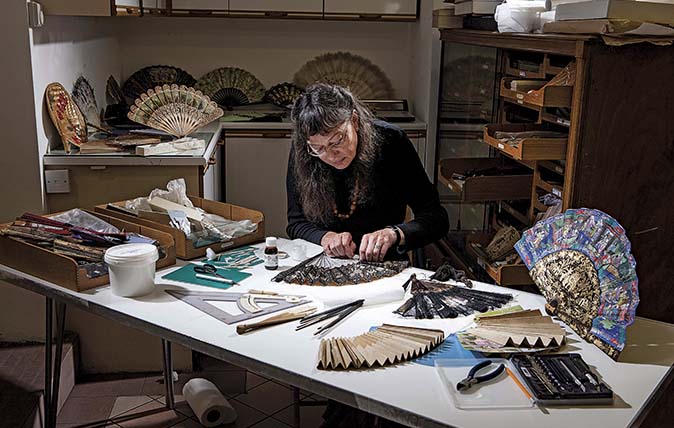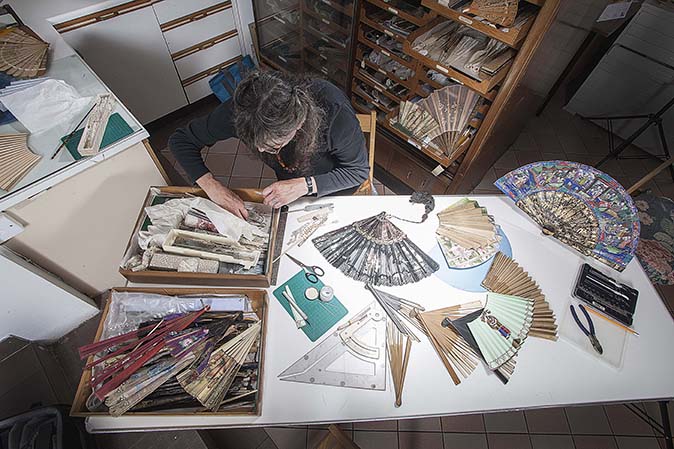The fan maker: ‘If you can fold a piece of paper, you can do it’
Caroline Allington is one of three people in the UK known for the heritage craft of fan-making. She explains to Annunciata Elwes about this intricate art.


‘We are being watched,’ denotes the fan twirled in the left hand. ‘When may I see you?’ – closed and touched to the right eye. ‘Kiss me,’ conveys the fan handle touched to the lips. Of all the emotions said to be communicated by the flux and fluttering of one’s fan, fan-maker Caroline Allington’s description is the most charming: ‘Once you pleat it up and open it out, the design smiles at you.’
Miss Allington started collecting fans at the age of 16. ‘I found them in junk shops, usually broken. I wanted to fix them all, so I taught myself how.’ That was 47 years ago. Now, the former curator teaches fan-making at the Fan Museum in Greenwich, SE10, and is the principal of three people in the UK known for the heritage craft, which is ‘critically endangered’, not helped by the rise of air-conditioning.

Since 3,000bc, fans have been in use the world over. ‘Even the Alaskans have dance fans,’ points out Miss Allington and in India, she relates, a punkah wallah would create a refreshing breeze by waving his leg around – he had a string tied to his toe, attached to a ceiling fan. ‘I love it because any craft under the sun can be involved, with dozens of materials in any one fan – gold thread, piqué work, bone, wood, ivory (thankfully, not any more), ebony, metal, silver filigree, ceramic plaques, embroidery and inlays.’
Making a fan is surprisingly straightforward. ‘If you can fold a piece of paper, you can do it,’ explains Miss Allington, who loves the way people’s faces light up when they learn. ‘Knowledge isn’t really knowledge unless you can pass it on to others. There’s no joy in it otherwise.’
This craftswoman doesn’t, however, hold much truck with the Victorian language of fans, ‘but they are good for whispering behind,’ she discloses.
Find out more about fan making at www.thefanmuseum.org.uk and see more traditional British craftsmen and women at heritagecrafts.org.uk
Exquisite houses, the beauty of Nature, and how to get the most from your life, straight to your inbox.
Annunciata is director of contemporary art gallery TIN MAN ART and an award-winning journalist specialising in art, culture and property. Previously, she was Country Life’s News & Property Editor. Before that, she worked at The Sunday Times Travel Magazine, researched for a historical biographer and co-founded a literary, art and music festival in Oxfordshire. Lancashire-born, she lives in Hampshire with a husband, two daughters and a mischievous pug.
